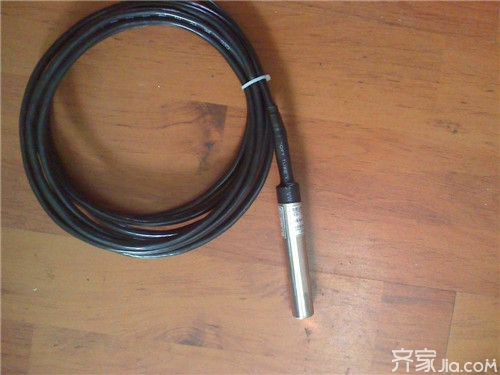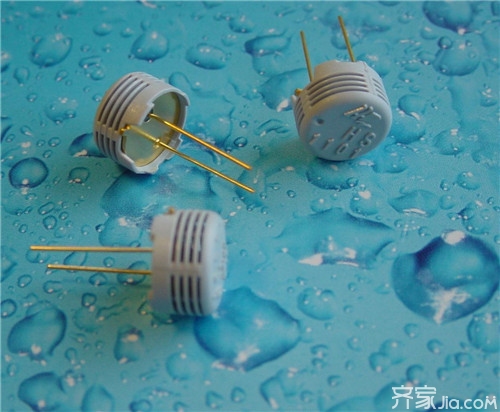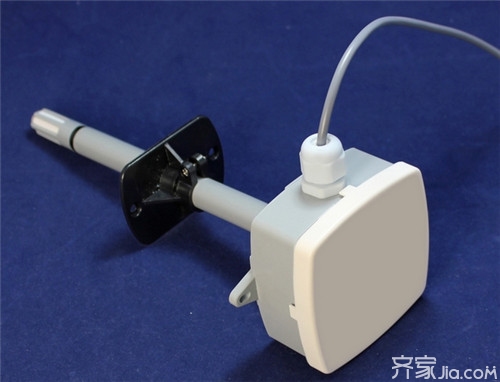Sensor technology is closely linked with computer technology and automatic control technology. The purpose of the measurement is to control, and the measurement range and control range are collectively called the range of use. Of course, for those who do not need to implement a measurement and control system, the direct selection of a universal hygrometer is all that is required. There are many types of humidity sensors , so the working principle of the humidity sensor is not the same, then the small series for everyone to introduce it.
[humidity sensor working principle]

1. Lithium chloride humidity sensor (1) Resistive lithium chloride hygrometer The first lithium chloride electro -humid sensor based on the principle of resistance-humidity is developed by FW Dunmore of the US Bureau of Standards. This kind of component has higher precision, at the same time the structure is simple and inexpensive, and it is suitable for a series of advantages such as measurement and control at room temperature and humidity.
The measurement range of the lithium chloride element is related to the lithium chloride concentration of the moisture sensitive layer and other components. The effective moisture range of individual components is generally within 20% RH. For example, a concentration of 0.05% corresponds to a humidity range of approximately (80 to 100)% RH, and a concentration of 0.2% corresponds to a concentration of (60 to 80)% RH. This shows that when measuring a wide range of humidity, it is necessary to use different concentrations of components together. The number of components that can be used for full-scale measurement of the hygrometer combination is generally 5, and the measurable range of the lithium chloride hygrometer that uses the component combination method is usually (15 to 100)% RH. Some foreign products claim that the measurement range is reachable ( 2 to 100)%RH.
(2) Dew-point lithium chloride hygrometer

The dew-point lithium chloride hygrometer was first developed by the Forboro Corporation in the United States, and much research has been done in China and many countries since then. This kind of hygrometer is similar in form to the above-mentioned resistive lithium chloride hygrometer, but its working principle is completely different. In short, it works by utilizing the saturation vapor pressure of a saturated aqueous lithium chloride solution as a function of temperature.
2. Carbon Humidity Sensor The carbon humidity sensor was first proposed by EKCarver and CW Breasefield in the United States in 1942. Compared with commonly used sounding elements such as hair, casing, and lithium chloride, the carbon humidity sensor has a fast response speed. The advantages such as good repeatability, no erosion effect, and narrow hysteresis loop make it attractive. China's meteorological department developed the carbon humidity sensor in the early 1970s and achieved positive results. The measurement uncertainty is not more than ±5%RH, the time constant is 2~3s at positive temperature, and the delay is generally 7 About %, the specific resistance stability is also better.
3, alumina moisture meter The outstanding advantage of alumina sensor is that the volume can be very small (for example, the moisture sensor for radiosonde is only 90μm thick, 12mg weight), and the sensitivity is high (the lower limit of measurement is -110°C dew point). Fast (usually between 0.3s and 3s), the measurement signal is directly output as electrical parameters, greatly simplifies the data processing program, and so on. In addition, it is also suitable for measuring the moisture in liquids. The above features are exactly what some measurement fields in industry and weather are hoping for. It is therefore considered to be one of several desirable sensors for high-altitude atmospheric exploration. It is precisely because of these characteristics that people have a keen interest in this method. However, it is regrettable that even though professionals in many countries have made unremitting efforts to improve the performance of sensors, they are exploring important process-related issues such as the technological conditions for the production of stable quality products and the improvement of performance stability.
4, ceramic humidity sensor

In the field of humidity measurement, measurement of low humidity and high humidity and its measurement at low temperature and high temperature is still a weak link so far, and humidity measurement technology under high temperature conditions is the most backward. In the past, the ventilated wet bulb hygrometer was almost the only method that could be used under this temperature condition, and this method has various problems in practical use and it is unsatisfactory. On the other hand, the progress of science and technology requires more and more occasions to measure humidity at high temperatures, such as the measurement and control of humidity in many industrial processes involving process conditions and quality control such as cement, metal smelting, and food processing. Therefore, since the 1960s, many countries have begun to research and develop humidity sensors that are suitable for measurements at high temperatures.
Xiaobian epilogue: The above are several kinds of humidity sensor working principles that apply more, and there are other humidity sensors developed based on different principles, which will not be introduced here.
[humidity sensor working principle]

1. Lithium chloride humidity sensor (1) Resistive lithium chloride hygrometer The first lithium chloride electro -humid sensor based on the principle of resistance-humidity is developed by FW Dunmore of the US Bureau of Standards. This kind of component has higher precision, at the same time the structure is simple and inexpensive, and it is suitable for a series of advantages such as measurement and control at room temperature and humidity.
The measurement range of the lithium chloride element is related to the lithium chloride concentration of the moisture sensitive layer and other components. The effective moisture range of individual components is generally within 20% RH. For example, a concentration of 0.05% corresponds to a humidity range of approximately (80 to 100)% RH, and a concentration of 0.2% corresponds to a concentration of (60 to 80)% RH. This shows that when measuring a wide range of humidity, it is necessary to use different concentrations of components together. The number of components that can be used for full-scale measurement of the hygrometer combination is generally 5, and the measurable range of the lithium chloride hygrometer that uses the component combination method is usually (15 to 100)% RH. Some foreign products claim that the measurement range is reachable ( 2 to 100)%RH.
(2) Dew-point lithium chloride hygrometer

The dew-point lithium chloride hygrometer was first developed by the Forboro Corporation in the United States, and much research has been done in China and many countries since then. This kind of hygrometer is similar in form to the above-mentioned resistive lithium chloride hygrometer, but its working principle is completely different. In short, it works by utilizing the saturation vapor pressure of a saturated aqueous lithium chloride solution as a function of temperature.
2. Carbon Humidity Sensor The carbon humidity sensor was first proposed by EKCarver and CW Breasefield in the United States in 1942. Compared with commonly used sounding elements such as hair, casing, and lithium chloride, the carbon humidity sensor has a fast response speed. The advantages such as good repeatability, no erosion effect, and narrow hysteresis loop make it attractive. China's meteorological department developed the carbon humidity sensor in the early 1970s and achieved positive results. The measurement uncertainty is not more than ±5%RH, the time constant is 2~3s at positive temperature, and the delay is generally 7 About %, the specific resistance stability is also better.
3, alumina moisture meter The outstanding advantage of alumina sensor is that the volume can be very small (for example, the moisture sensor for radiosonde is only 90μm thick, 12mg weight), and the sensitivity is high (the lower limit of measurement is -110°C dew point). Fast (usually between 0.3s and 3s), the measurement signal is directly output as electrical parameters, greatly simplifies the data processing program, and so on. In addition, it is also suitable for measuring the moisture in liquids. The above features are exactly what some measurement fields in industry and weather are hoping for. It is therefore considered to be one of several desirable sensors for high-altitude atmospheric exploration. It is precisely because of these characteristics that people have a keen interest in this method. However, it is regrettable that even though professionals in many countries have made unremitting efforts to improve the performance of sensors, they are exploring important process-related issues such as the technological conditions for the production of stable quality products and the improvement of performance stability.
4, ceramic humidity sensor

In the field of humidity measurement, measurement of low humidity and high humidity and its measurement at low temperature and high temperature is still a weak link so far, and humidity measurement technology under high temperature conditions is the most backward. In the past, the ventilated wet bulb hygrometer was almost the only method that could be used under this temperature condition, and this method has various problems in practical use and it is unsatisfactory. On the other hand, the progress of science and technology requires more and more occasions to measure humidity at high temperatures, such as the measurement and control of humidity in many industrial processes involving process conditions and quality control such as cement, metal smelting, and food processing. Therefore, since the 1960s, many countries have begun to research and develop humidity sensors that are suitable for measurements at high temperatures.
Xiaobian epilogue: The above are several kinds of humidity sensor working principles that apply more, and there are other humidity sensors developed based on different principles, which will not be introduced here.
High Temperature Pressure Sensor Load Cell Level Sensor Liquid Sensor Gas Sensor
Secondary Baked Conductive Electrode
Electrical Conductivity Electrode,Transparent Conductive Electrodes,Good Quality Conducticity Electrode,Conductivity Level Cell Probe Electrodes
Taigu Tengfei Carbon Co., Ltd. , https://www.tftsgs.com